
24/7 Wall St. Insights:
- The Brazilian Army operates the largest tank army on the continent, boasting over 450 operational tanks
- At the core of Brazil’s tank army are the Leopard 1A5 and M60A3 tanks, from Germany and the United States, respectively
- The Leopard 1A5 comes standard with a 105mm L7 rifled gun, capable of firing various munitions, and it is powered by a 10-cylinder multi-fuel engine which can produce 830 horsepower, allowing for a top speed of roughly 40 mph
- Brazil also recently released the newest iteration of its Astros II Multiple Launch Rocket System (MLRS)
- Also: Discover “The Next NVIDIA”
The Brazilian Army operates the largest tank army on the continent, boasting over 450 operational tanks, far outpacing its neighbors. This formidable force is key to Brazil’s military dominance in South America. While other countries might have tank armies as well, Brazil is by far and away the leader in this regard. (This is the strongest military in South America, and there isn’t a close second.)
At the heart of Brazil’s tank army are the Leopard 1A5 and M60A3 tanks, from Germany and the United States, respectively. These tanks give Brazil a decisive edge in ground combat scenarios, should the need ever arise.
The Leopard 1A5 is a modernized version of the original Leopard 1, which was introduced in 1965. These tanks come standard with a 105mm L7 rifled gun, capable of firing various munitions. They are powered by a 10-cylinder multi-fuel engine which can produce 830 horsepower, allowing for a top speed of roughly 40 mph. One of the key upgrades for the A5 variant is its advanced fire control system, which includes thermal imaging and laser rangefinders, basically allowing for better precision at much greater distances than the original.
Even with this impressive tank force, Brazil is continuing to modernize its military as a whole. The country has been adding to its air force as well as its navy. Brazil also recently released the newest iteration of its Astros II Multiple Launch Rocket System (MLRS). (The Astros II is the newest MLRS to come out of South America.)
Other South American nations have modernized their militaries as well, but none come close to matching Brazil’s investment in armored vehicles. For example, Argentina, Brazil’s nearest competitor, operates around 350 tanks and then Chile maintains a force of 270 tanks. Here 24/7 Wall St. is taking a look at the tank armies of South America as a whole.
To identify the South American countries with the most tanks, 24/7 Wall St. reviewed 2024 Military Strength Ranking from Global Firepower, an annually updated defense-related statistics website with information on 145 countries. Countries were ranked on the total number of tanks in their arsenal. We included supplemental information regarding the total military vehicles, artillery and MLRS units, as well as each country’s overall military strength score. Nations that do not have any tanks in their arsenal were excluded.
Here is a look at the largest tank armies in South America:
Why Are We Covering This?

Understanding the military dynamics of South America is important considering the region’s evolving geopolitical landscape and its strategic importance. Historically, South America has experienced internal conflicts and border tensions, but its military presence is now key in maintaining regional stability and security.
9. Paraguay
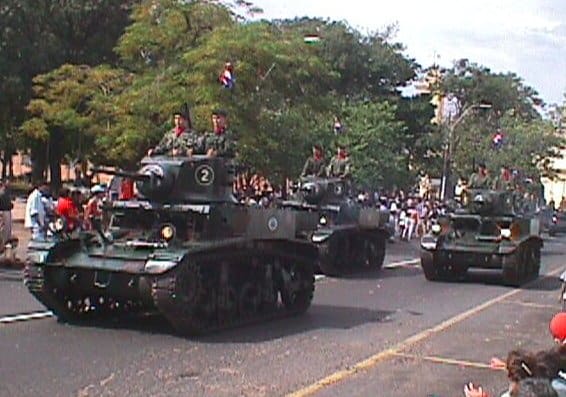
- Total tanks: 10
- Total artillery: 28
- Total MLRS: 0
- Total military vehicles: 1,936
- Military strength score: 1.7053 – #85 out of 145
Currently, Paraguay has just under 16,000 active military personnel. It has around 2,000 military vehicles and just over 40 military aircraft as well.
After gaining independence in 1811, Paraguay’s military played a big role in the country’s defense, especially during the War of the Triple Alliance in the later 1800s. Since then, the military became more involved in state affairs, especially during the 20th century. And like many other South American countries, Paraguay’s military has been closely tied with its politics.
This led to the dictatorship of General Alfredo Stroessner, who took control in 1954 and ruled until 1989. It wasn’t until Stroessner was overthrown that Paraguay began its slow journey back to democracy, diminishing the influence of the military over the years.
As it stands now, the Paraguayan military is now more internally focused on defense and maintaining security within the country. And as such, Paraguay doesn’t need a large force to accomplish its objectives.
8. Uruguay
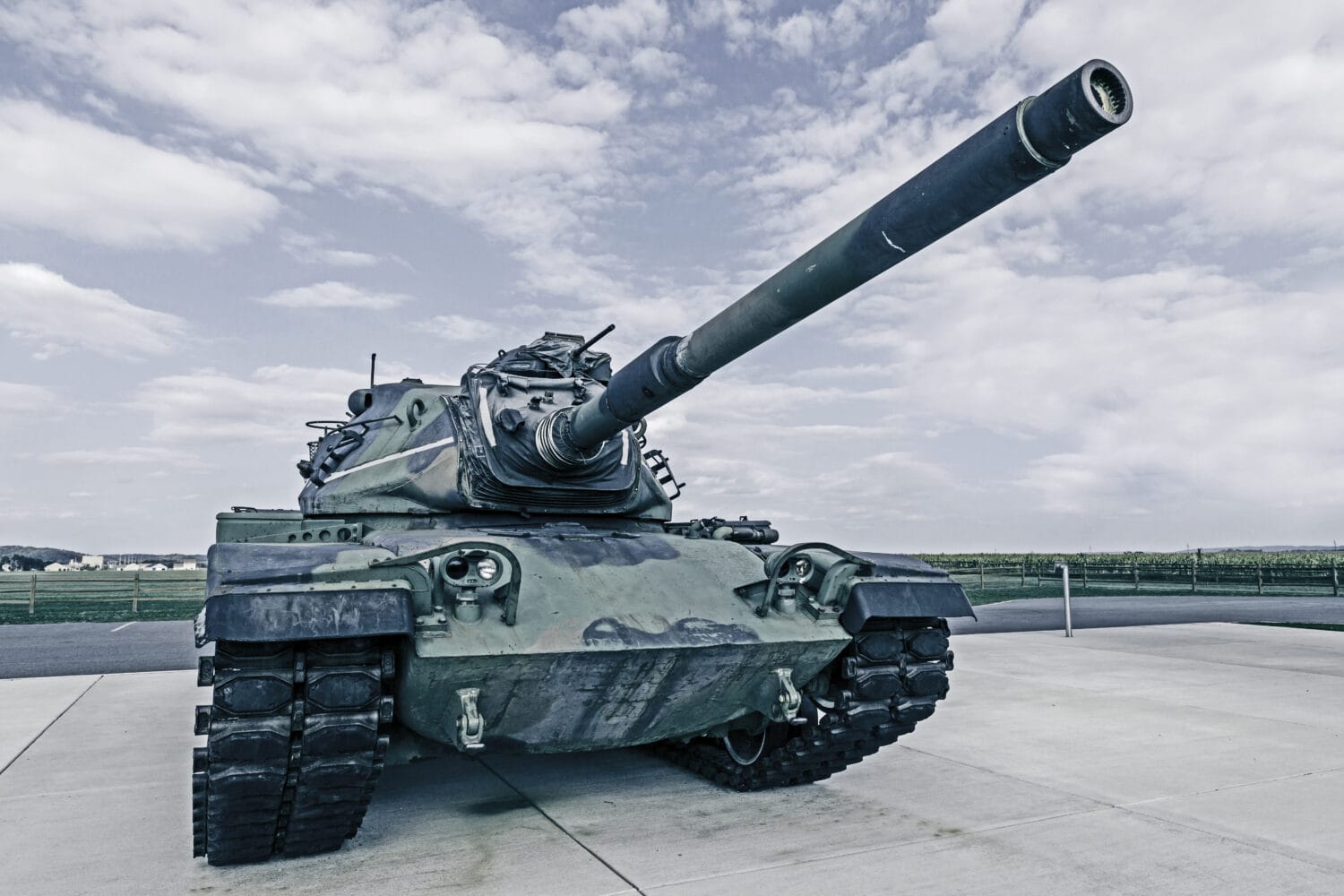
- Total tanks: 39
- Total artillery: 77
- Total MLRS: 4
- Total military vehicles: 3,993
- Military strength score: 1.9695 – #96 out of 145
Currently, Uruguay only has a standing army of about 25,000 active personnel, 43 military aircraft, and just under 4,000 military vehicles.
Like many countries in South America, Uruguay’s military has been closely tied with its political developments. After securing its independence in 1828, the military played a pivotal role in the country’s early years.
Later on in the 20th century, Uruguay was subject to military rule, most notably during the Bordaberry dictatorship starting in 1973, when the military seized control of the government in response to political instability. Democracy was restored in 1985, and like Suriname, the government moved to reduce the influence of the military.
One of the main shifts from the militaristic rule was repurposing Uruguay’s armed forces to a more passive and defensive role. Instead of trying to project power, Uruguay’s military is typically more involved in disaster relief, peacekeeping missions, and internal security.
7. Bolivia

- Total tanks: 54
- Total artillery: 55
- Total MLRS: 0
- Total military vehicles: 452
- Military strength score: 1.4851 – #82 out of 145
Currently, Bolivia’s military includes about 40,000 active personnel. The air force operates a modest fleet of 63 aircraft, and the navy is practically nonexistent as the country is landlocked.
Bolivia’s military has played a central role in the direction of the country since gaining its independence in 1825 from Spain. The War of the Pacific was a notable moment in military history for the country as it lost its Pacific coastline to Chile in 1884. The military would go on to be heavily influential on the country’s direction in the 20th century.
During this time, the Bolivian military frequently intervened in politics, with multiple coups and military governments. One of the most significant periods of military rule was under General Hugo Banzer, who led a dictatorship from 1971 to 1978. However, a return to democracy in the early 1980s would also come with a weaker military influence. This shift repurposed the military’s role to be more focused on national defense and internal security.
6. Ecuador

- Total tanks: 55
- Total artillery: 155
- Total MLRS: 35
- Total military vehicles: 5,662
- Military strength score: 1.2388 – #72 out of 145
For a country with a population of 18 million, Ecuador operates a comparatively sizable military force with 41,000 active personnel. The country has over 100 military aircraft and 55 tanks. The air force owns a mix of fighter jets, transport planes, and helicopters, while its navy has a couple submarines and frigates that patrol the coast.
Throughout the 20th century, Ecuador experienced multiple military coups, most notably in 1972 when General Guillermo Rodríguez Lara took control of the government. His rule lasted until 1979, when the country shifted back to democratic rule. However, like many other South American countries, the people were wary of military power.
Today, the main responsibilities of Ecuador’s military are protecting its national sovereignty, addressing security threats like drug trafficking, and providing disaster relief where needed.
5. Venezuela
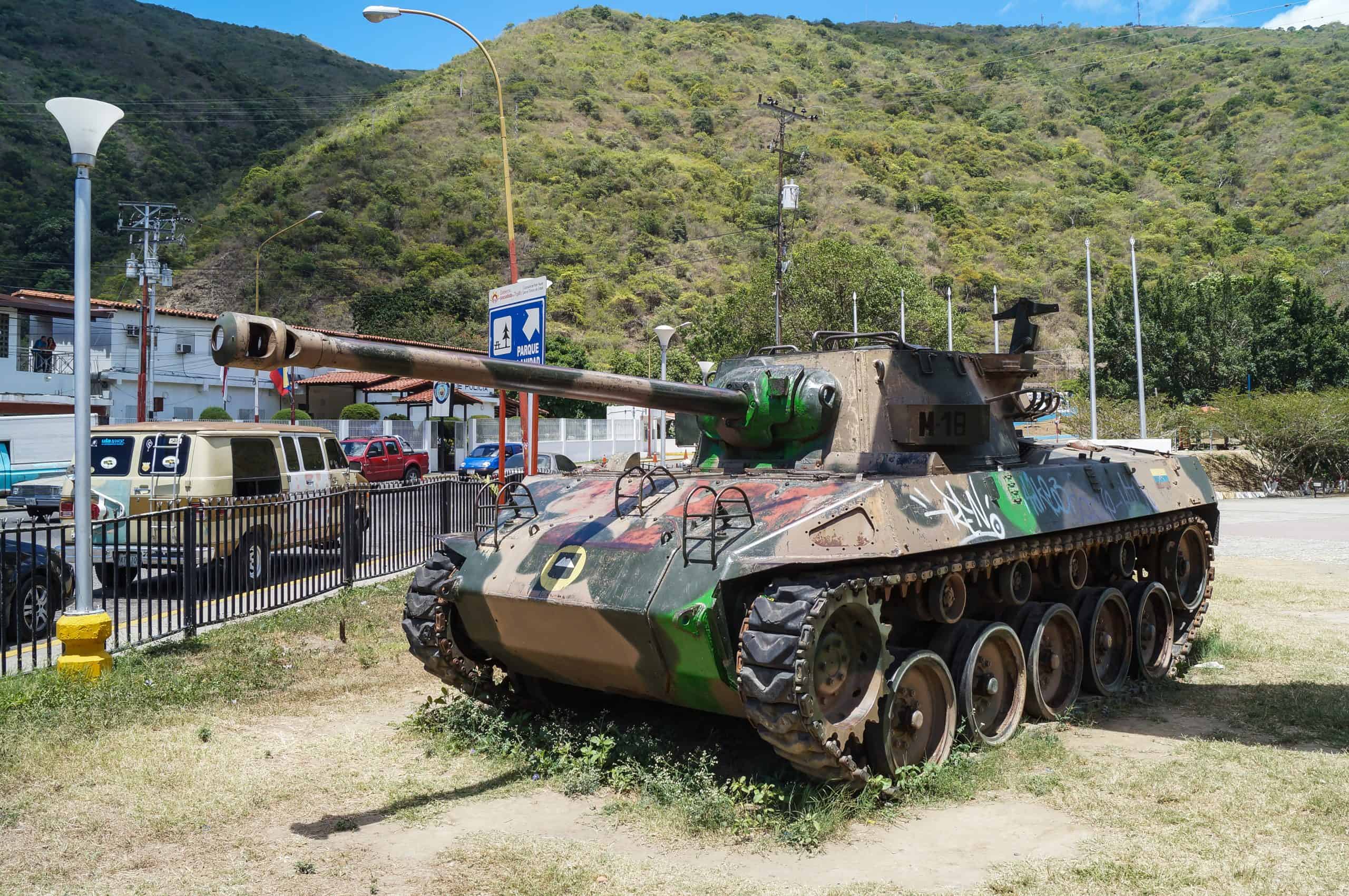
- Total tanks: 180
- Total artillery: 164
- Total MLRS: 36
- Total military vehicles: 14,966
- Military strength score: 0.9447 – #57 out of 145
Venezuela is an interesting case study in militaries in South America. Some might argue that it is still under military rule, and that it has not returned to democratic rule like other nations on the continent.
Although the country had returned to democratic rule in the 1950s after suffering a number of coups and instability, it would ultimately revert back in 1999 when Hugo Chavez rose to power. Chavez was a former military officer and gained popularity with the citizenry, enough to create a citizen militia that blurred the lines between politics and military.
Chavez’s successor, Nicolas Maduro, is currently in power and he is seeking a third term as the President of Venezuela. Again, critics will argue the electoral process in Venezuela is less than transparent. However, one thing Maduro has done is grow the military.
Venezuela has nearly 110,000 active military personnel, but this is dwarfed by its paramilitary forces numbering around 220,000. Much of these paramilitary forces like the Bolivarian Militia are made up of citizens.
Outside of this, the military operates nearly 250 aircraft and about 15,000 vehicles. It has almost 200 tanks, and its navy operates over 30 vessels.
4. Peru
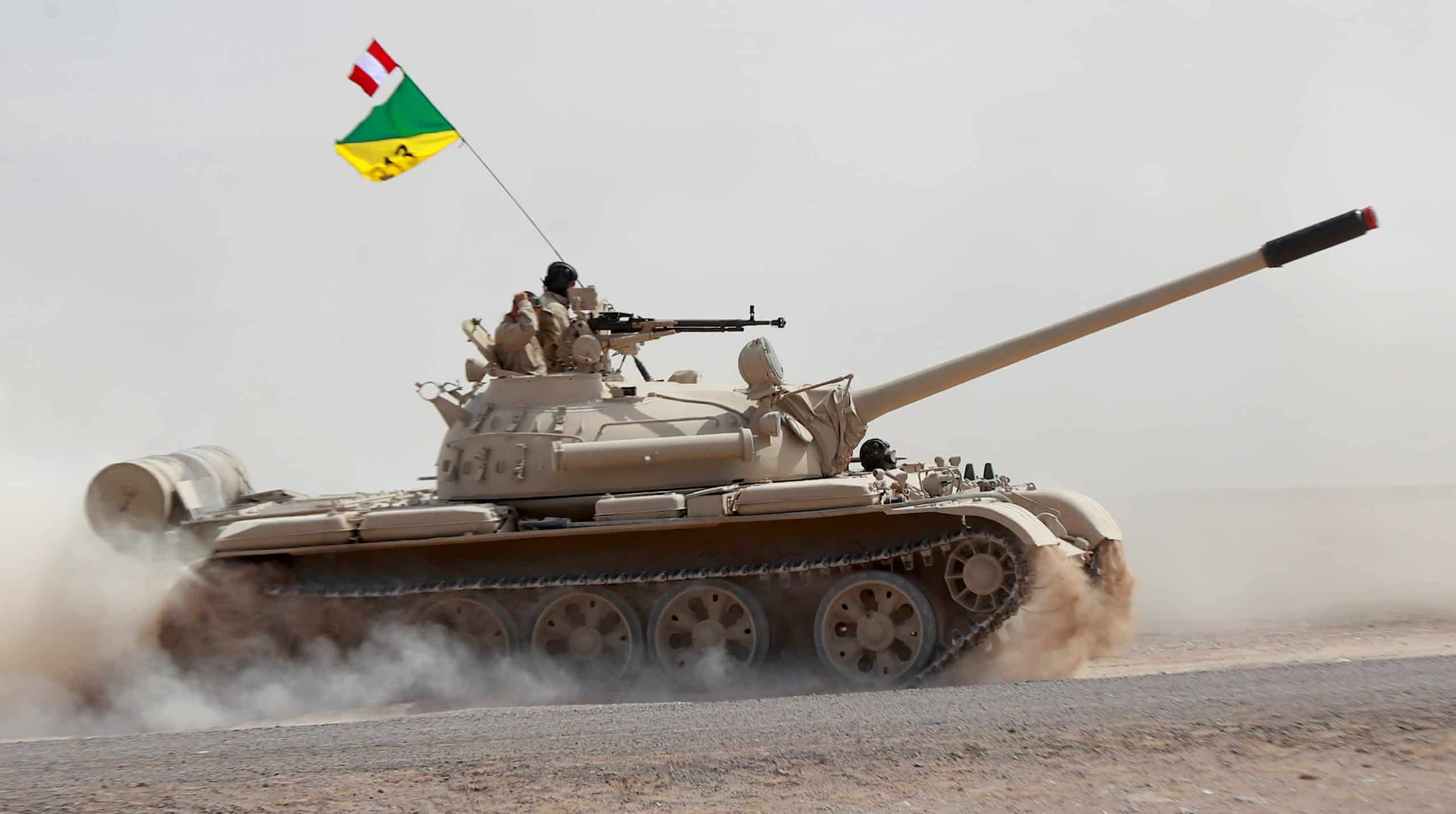
- Total tanks: 261
- Total artillery: 298
- Total MLRS: 73
- Total military vehicles: 7,896
- Military strength score: 0.8475 – #53 out of 145
Currently, the Peruvian military consists of 120,000 active personnel. It operates over 250 aircraft and nearly 8,000 military vehicles.
Peru has a long military history, including several coups and times of military rule. These events helped shape the Peruvian Armed Forces into what they are today, with more of a focus on security and defense. Even though the military now has a smaller role, it is still one of the stronger forces in South America.
General Juan Velasco Alvarado held power over the country between 1968 and 1980, ultimately implementing land reforms and nationalizing key industries. Ironically, Velasco was overthrown in another military coup by General Francisco Morales Bermudez, who actually moved the country back towards a democracy.
In recent decades, the Peruvian military was involved in counterinsurgency operations, notably against the Shining Path, a far-left guerilla group. While the government eventually cut down the group’s influence, the Peruvian military continues to combat what’s left of the group in remote areas of the country. Outside of that, Peru’s military primarily operates in peacekeeping missions and disaster relief.
3. Chile
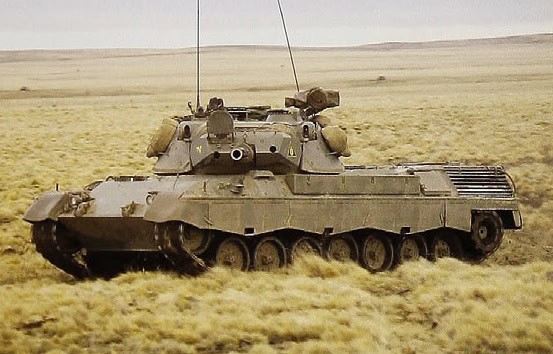
- Total tanks: 270
- Total artillery: 273
- Total MLRS: 20
- Total military vehicles: 9,492
- Military strength score: 0.8128 – #52 out of 145
Chile’s military, known as the Chilean Armed Forces, consists of three branches: the Army, Navy, and Air Force. It has around 80,000 active personnel in total. Chile also operates one of the larger air forces in South America with nearly 300 military aircraft in its fleet. Like its neighbors, Chile has an interesting history of military and politics.
Known as one of the most brutal dictators of South America, General Augusto Pinochet took control of the Chilean government in 1973. Pinochet ruled as a military dictator until 1990, with many human rights abuses and political repression. The military also saw a massive expansion during this time adding tanks and aircraft to its arsenal.
Pinochet was also famous for his involvement in Operation Condor, where dictatorships across the continent moved to snuff out or suppress their political rivals in a collaborative effort. This covert operation would ultimately strengthen the military’s grasp over Chile and any dissidents that might oppose it.
After Pinochet lost power in 1990, the military was relegated to a much lesser role. Since then, the military has focused more on national security as well as disaster relief, especially since Chile is prone to natural disasters like earthquakes and tsunamis.
2. Argentina
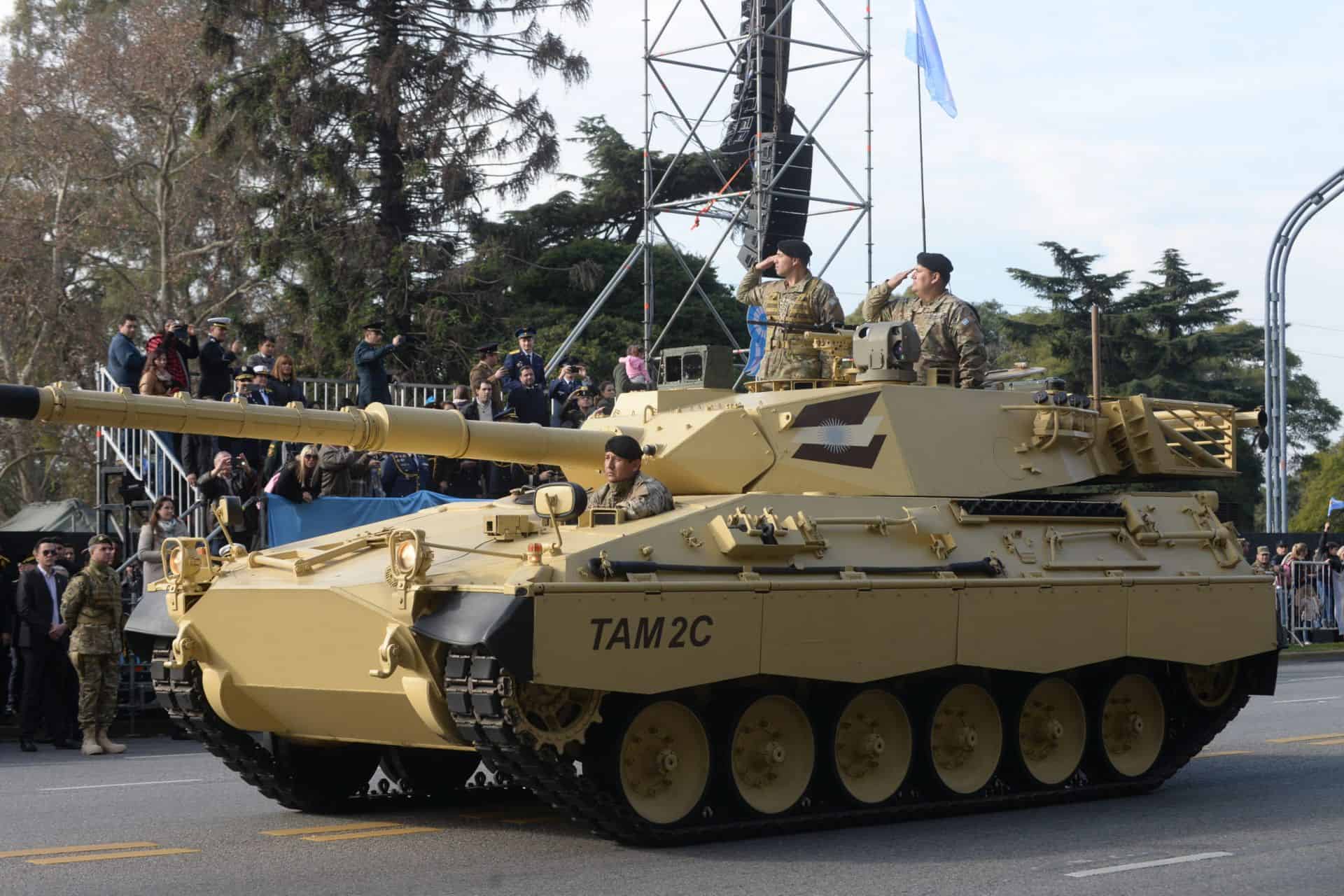
- Total tanks: 348
- Total artillery: 222
- Total MLRS: 26
- Total military vehicles: 21,724
- Military strength score: 0.3823 – #28 out of 145
Throughout the 20th century, Argentina suffered through multiple wars and dictatorships. This largely crafted how the Argentine Armed Forces handles itself today.
One of the most infamous instances was the Dirty War that took place from 1976 to 1983. General Jorge Rafael Videla overthrew the government and, through the military, targeted people it suspected of opposing the government, resulting in the disappearance, torture, and death of thousands. This was part of a larger collaboration, Operation Condor, between dictatorships across the continent.
Ultimately, this dictatorship would come crashing down when Argentina fought the Falklands War against the United Kingdom. The defeat was a major blow to the dictatorship and resulted in the people turning against the government and back towards democratic rule. With this push, the military waned in influence in the decades to come.
Despite this, Argentina’s armed forces are considered the second strongest on the continent. It boasts nearly 110,000 active personnel, 229 military aircraft, and nearly 350 tanks. On the world stage, Argentina ranks in the top 30 armed forces in terms of military strength.
1. Brazil
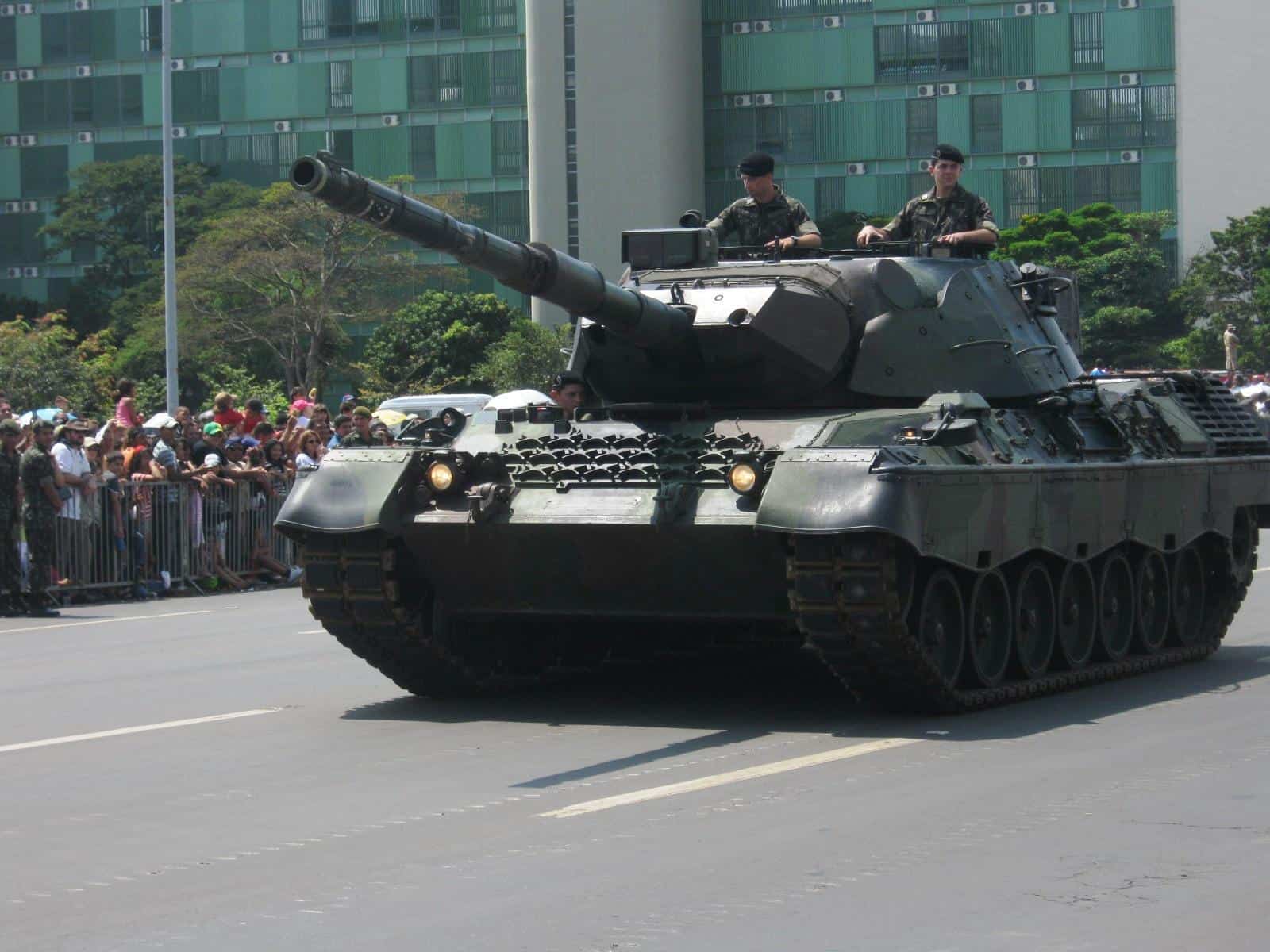
- Total tanks: 469
- Total artillery: 632
- Total MLRS: 78
- Total military vehicles: 44,044
- Military strength score: 0.1944 – #12 out of 145
Out of all the countries in South America, Brazil is considered to have the strongest military force. Officially known as the Brazilian Armed Forces, it consists of three branches, Army, Navy, and Air Force. Like every other nation on this list, Brazil had its brush with coups and military dictatorships.
One of the most important periods in time for this country began in 1964, when the military took control of the government. In the wake of the coup, the military regime carried out countless human rights abuses and censored its people. By 1985, Brazil returned to a civilian government but unlike its neighbors, the military still held significant sway for some time.
Now, Brazil’s military is primarily focused on national defense. It has conducted peacekeeping missions with the United Nations to countries like Haiti and Lebanon. The military also works to protect the Amazon rainforest from illegal activities like deforestation or drug trafficking.
Take Charge of Your Retirement In Just A Few Minutes (Sponsor)
Retirement planning doesn’t have to feel overwhelming. The key is finding expert guidance—and SmartAsset’s simple quiz makes it easier than ever for you to connect with a vetted financial advisor.
Here’s how it works:
- Answer a Few Simple Questions. Tell us a bit about your goals and preferences—it only takes a few minutes!
- Get Matched with Vetted Advisors Our smart tool matches you with up to three pre-screened, vetted advisors who serve your area and are held to a fiduciary standard to act in your best interests. Click here to begin
- Choose Your Fit Review their profiles, schedule an introductory call (or meet in person), and select the advisor who feel is right for you.
Why wait? Start building the retirement you’ve always dreamed of. Click here to get started today!
Thank you for reading! Have some feedback for us?
Contact the 24/7 Wall St. editorial team.
